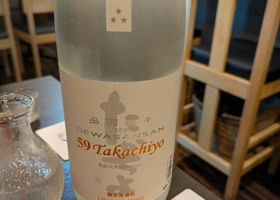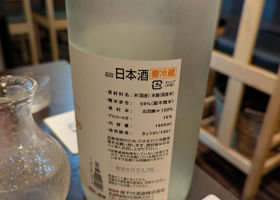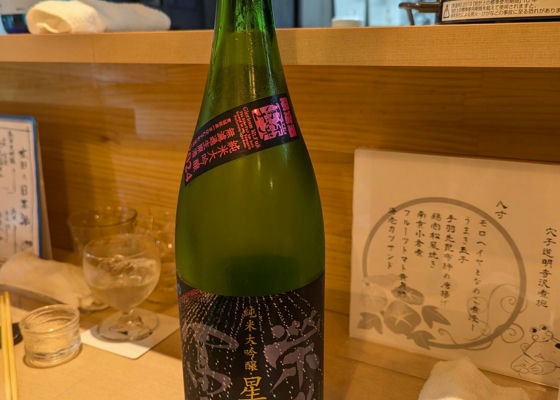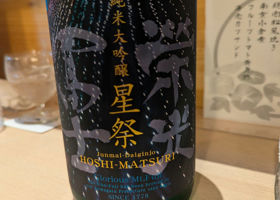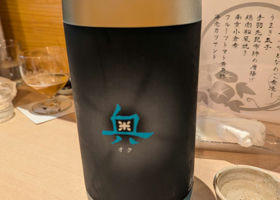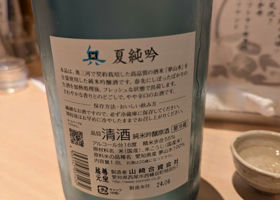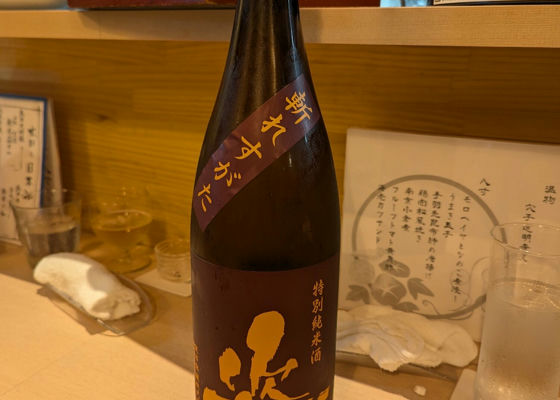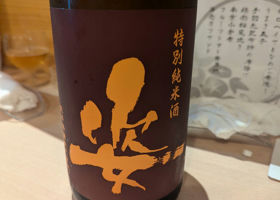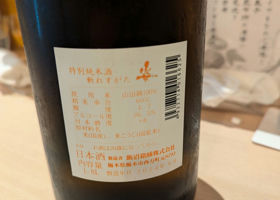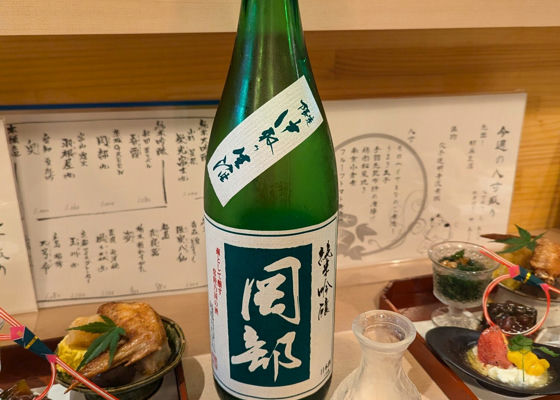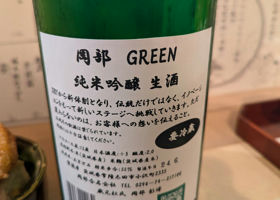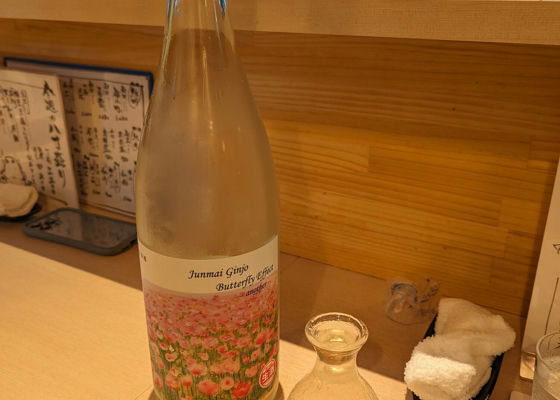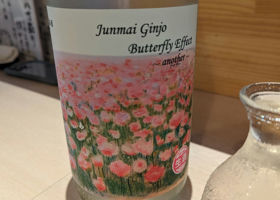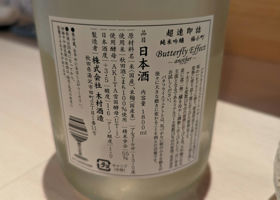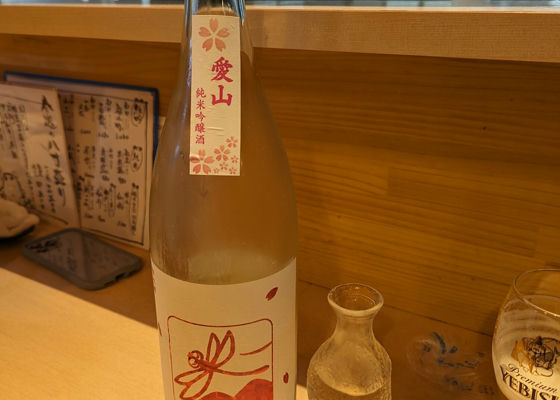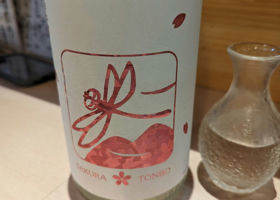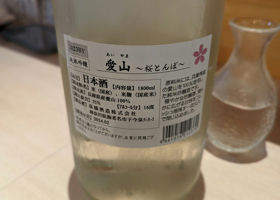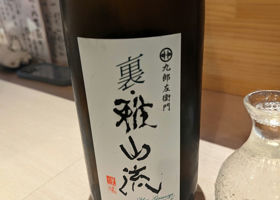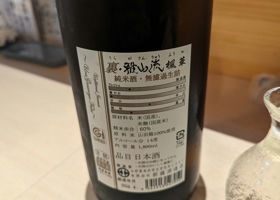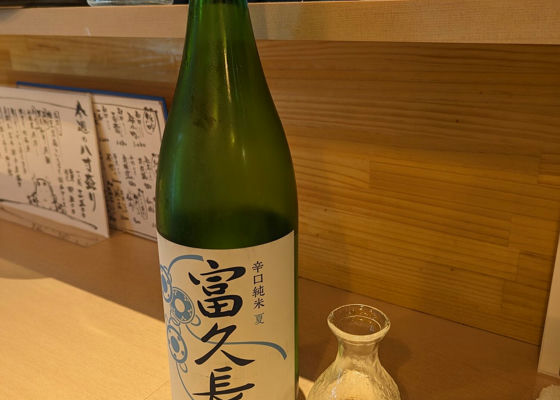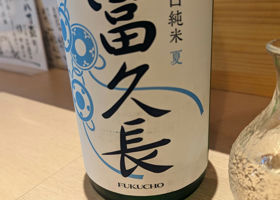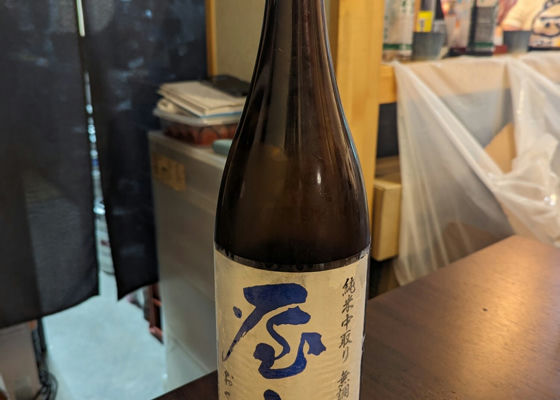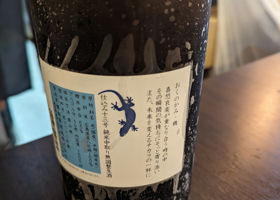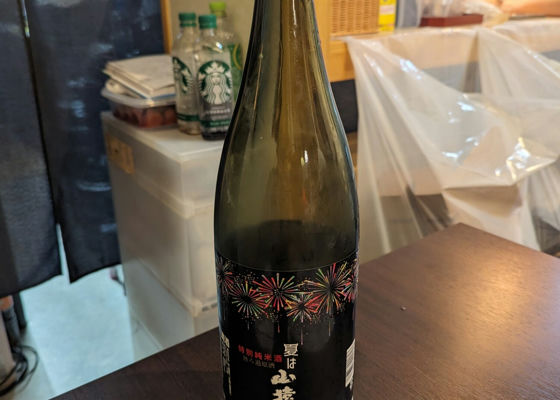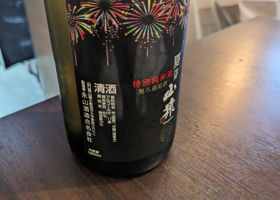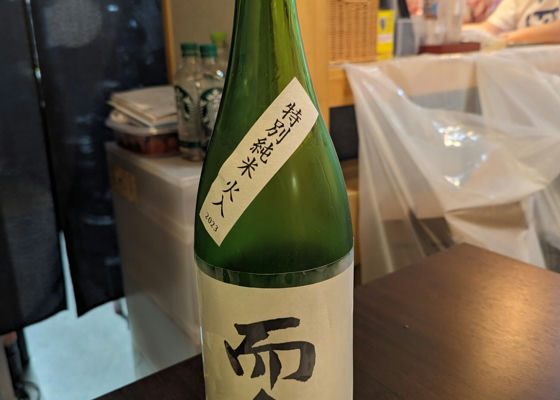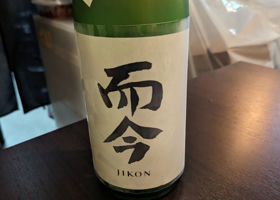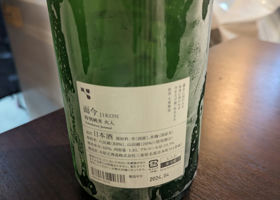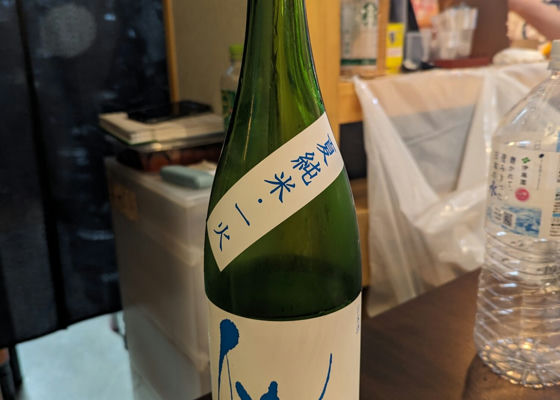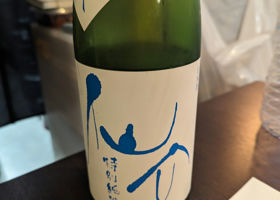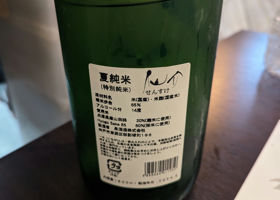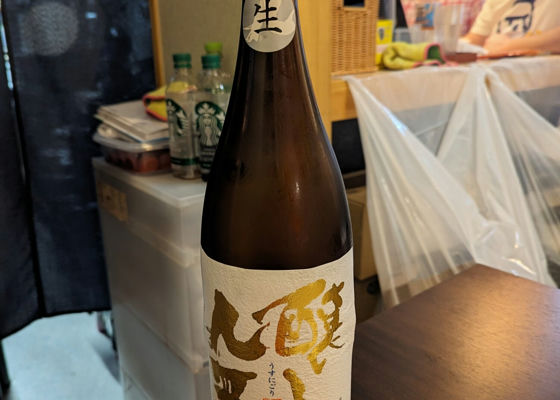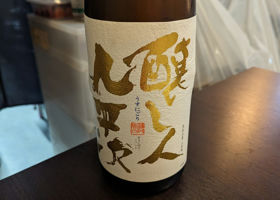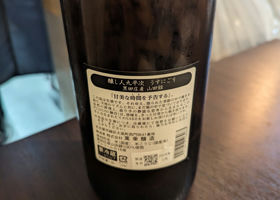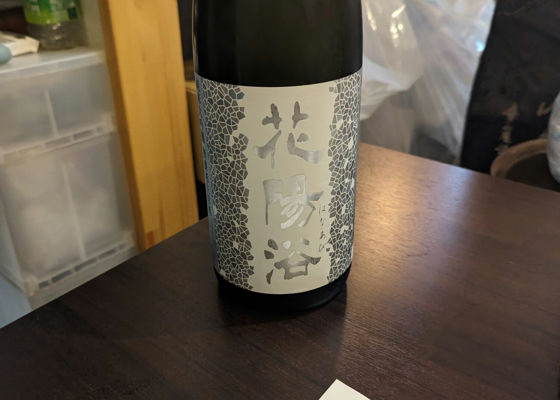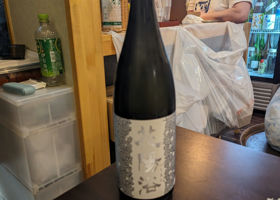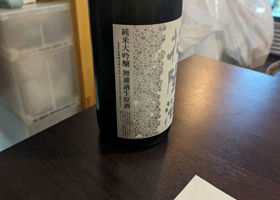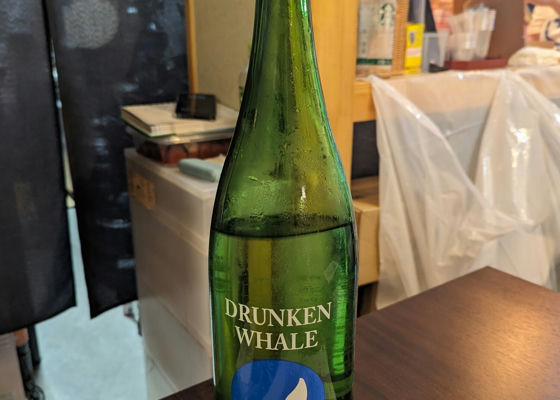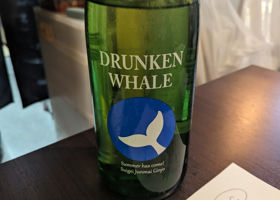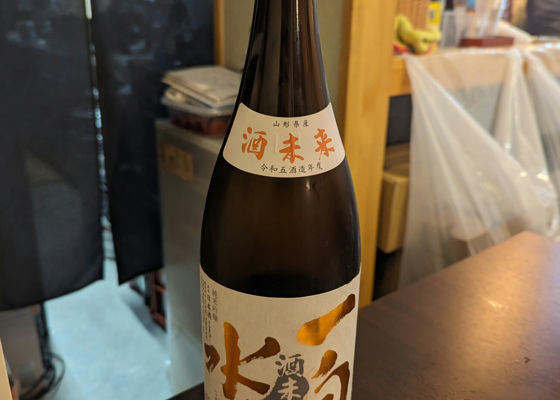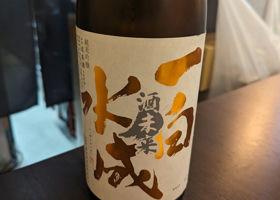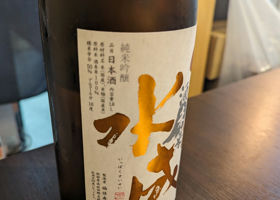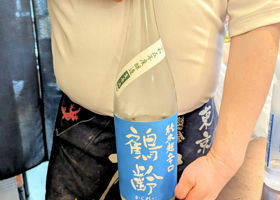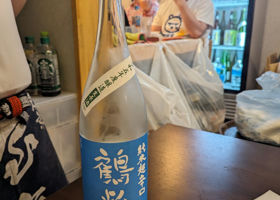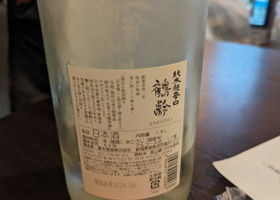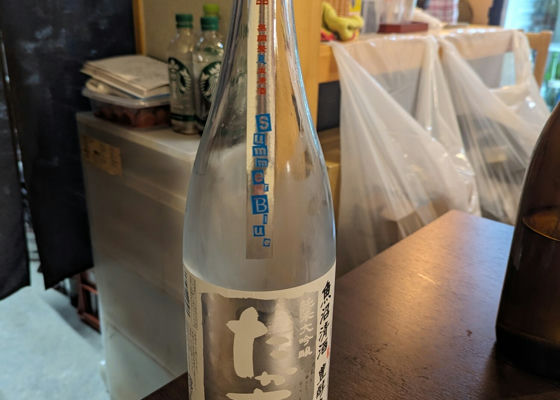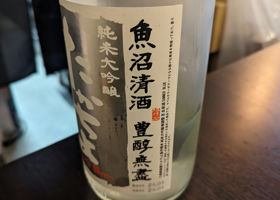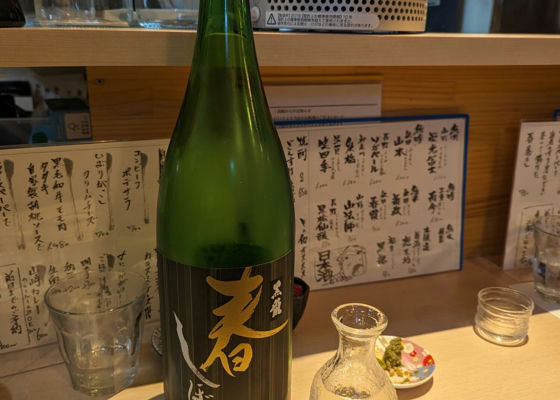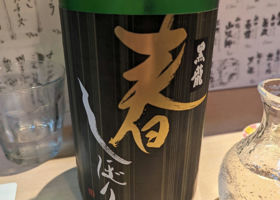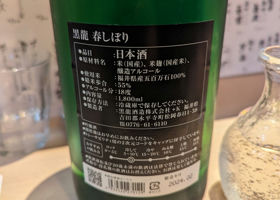Timeline
TakachiyoTakachiyo 59 出羽燦々 純米吟醸 無調整生原酒 限定流通品 CHAPTER EIGHT純米吟醸原酒生酒無濾過 南十字輝7/10
Alphabet Takachiyo is the one with different rice.
This one is CHAPTER 8, and the rice used is Dewa Sanzai.
The No. 18 yeast, flat milling, and 59% milling ratio should be fixed.
The sake had a plump flavor typical of Dewa Tsannin, but also had a fruity and sweet taste like green apples.
I like the roundness of it. It was delicious! 南十字輝8/10
Eiko-Fuji's summer sake, the third and last of the Star Series.
Manamusume from Miyagi Prefecture is used.
It still has a gorgeous taste, and I have the impression that it is a bit tiring to drink.
However, this was a very strong sake after a series of light sake on that day.
I thought it was not right to drink it last, but it was indeed delicious. 南十字輝7/10
A summer sake with a cool label in the back.
It is said to be a 16% original sake made with Yumesansui.
It certainly has a fresh and refreshing taste.
It has a light and refreshing taste with a summery throat and a sharp finish in the latter half.
For some reason, the same type of sake was served one after another on this day, so I would have liked to drink it at a different time. 南十字輝8/10
The figure is good!
Uma-i-no-shiki (inverted)
It's easy to drink neat for a juicy figure, and it's dry and different from usual.
Still, it's compelling enough to be tasty.
The umami of Yamada-Nishiki is on top of it.
Good appearance. 南十字輝6/10
Okabe Gomei Company in Ibaraki, where Matsumori and other sake are made.
Is this sake using the company name "Okabe"?
The back of the label says that the company is under new management, so perhaps this is a sake that has taken on a new challenge.
As the name "GREEN" suggests, the taste is refreshing.
It is made from Ibaraki Prefecture's Gohyakumangoku rice and has a refreshingly dry finish.
It has a slight bitterness in the second half, which is my personal favorite genre of sake.
I can't help but feel that I would have liked it a little looser as a first drink. 南十字輝6/10
Fukkomachi's low-alcohol line. Another of those.
The label on the back of the bottle says that it is a dry direction.
I wonder if it is rare to find a dry low-alcohol sake.
However, it is rather sweet when you drink it.
It is fruity, slightly effervescent, and super easy to drink.
I guess it is difficult to achieve this taste with low alcohol. 南十字輝5/10
Last year the sake was lightly cloudy, but this year it was clear.
It had a hint of sweetness typical of Aizan, but the overall flavor was clean and refreshing.
I had an image of a sweeter, fruity sake, but it was quite refreshing and a bit hard. 南十字輝6/10
This is Gazanryu, which uses 100% Yamada-Nishiki.
This is the back side because it is Yamada-Nishiki.
Recently, there is also a super-backside, so Masanryu is getting more and more difficult to make.
It is "Ura" in name, but in taste, it is very much "Omote".
It is fruity, gorgeous, and has an alcohol content of 14%, making it a very recent-looking sake.
I heard that the "Super Uraku" is moving in the opposite direction, back to the standard, and I'd like to compare the two.
Let's have a Gazan Ryukai. 南十字輝6/10
Tomikyucho's summer sake.
It is said to have a "crispiness" to it.
I looked it up and found that it is a term used to describe the texture of linen or cotton.
Anyway, it's supposed to be refreshing.
Let's use it. "Shari-feel" is a word that means "crispness.
The taste was refreshing, with a hint of bananas that raised the summeriness of the drink to a new level.
It is a delightful sake that is easy to drink and has a crisp mouthfeel. コタローNice to meet you, Southern Cross Shine. I always refer to your reviews 😊.
I too saw the description of this sake and thought it had a crispiness? Is it an ice cream-like slurping sensation? 🤔 and other stupid thoughts 🧊It is a refreshing summer sake 🧊☺️ 南十字輝Kotaro.
Sorry for the very late reply💦.
I was really curious about the crunchy texture, wasn't I? I was imagining shaved ice too 🥺.
The banana scent is also very summery, isn't it? 南十字輝7/10
Yamori's standard, blue label.
This is a definite delicacy.
It has a strong presence as a unique drink even when many sakes are served at a sake party.
The juiciness stands out and the aroma is strong.
There is nothing I can say about it now.
It is a sake that I hope will continue to be a standard item. ジェイ&ノビィGood evening, Southern Cross Terrace 😃.
Yamori🦎! I finally got to drink it this year ‼️ and it was delicious 😋!
I hope it will continue to be a standard sake 🤗. 南十字輝Good evening, Jay & Nobby! I🦎yamori🦎 is delicious☺.
Lately I'm looking for sake that I find tasty rather than rare sake. I want to increase my favorite sake ☺. 南十字輝6/10
I drank Yamazaru a while ago in the summer.
At that time, I wrote that I felt a peculiar taste deep in the flavor, and my impression was the same this time.
I felt a bitterness, an odor, or a peculiar taste.
It is possible to become addicted to this peculiar taste.
I wonder how it would be as a food wine.
I think it has an interesting flavor. 南十字輝7/10
A fire-roasted type of Jikin. I'm sure I've had this several times.
It is not a delicious Jikin, but has a rather refreshing taste.
The unfiltered type is juicy, but this one has a gentle taste with the mildness of the rice gradually coming out.
While I still prefer the unfiltered draft type, I still think Jikin is a great sake that tastes great. 南十字輝6/10
Summer sake from Senzuke. I wonder if "ippiki" means "once fired" or "bottle heated".
Yes, it has a summery taste.
I can see how it would be easy to drink during the hotter months of the year.
It is refreshing and light.
I can understand that this is the kind of sake you would expect from a summer sake.
But there are differences in the details, so I have to taste it properly. 南十字輝7/10
I'm not sure why it was here, since I believe Kuheiji's light nigori was a winter release.
Even though it is a light nigori, it is a refreshing sake with a clean and crisp taste.
As expected of Kuheiji. It's always good!
I have to admit that I don't drink much sake these days because of this high level of quality.
For better or worse, I tend to look for the unexpected. Isn't that what you are doing...? Hanaabi純米大吟醸 美山錦 無濾過生原酒純米大吟醸原酒生酒無濾過 南十字輝6/10
It's a hana-yori under the sun~!
It was not sake for this sake party, but I was served some.
Of course, Hanahyokyu is delicious and has a unique flavor.
This melting flavor. And the fruity aroma.
However, in the end, it is all about taste, and this sake always makes me think about finding the right sake that I like. 南十字輝5/10
It's been two years since I drank this.
It's a typical drunken whale sake.
I don't think it is suitable for a sake party.
From my previous experience, it has more flavor if you raise the temperature a little, but if you drink it with fruity sake, it loses half of its charm.
I think it is better to drink this sake alone with a meal.
I think it would be good with a salty meal or cheese. 南十字輝6/10
I thought it would be super fruity because it is Isshaku Suisei and Sake Mirai, but what do I find? It was a little different from what I expected.
It was a slightly thicker, richer sake with a stronger bitterness in the latter half.
Maybe it was because it was a mouth-opener.
I was expecting sake from Sake Mirai to be more like Jyushiyo, but this was not like that at all, and on the contrary, I liked it.
I am not too familiar with the factors of taste and true cause, but it is fun when there are flavors that tend to be different from what I expected. 南十字輝7/10
A blue bottle of Tsururei. This bottle is available every year, isn't it? Probably.
It is classified as super dry and has a high alcohol content because it is a draft sake.
It is a very easy-drinking sake despite its high alcohol content, so if you are not careful, you will end up drunk.
I think the reason it is easy to drink is the acidity.
The taste itself is strong, and it doesn't go down your throat as easily because it has some resistance.
But it is not easy to drink because it is not easy to swallow. TakachiyoSummer Blue 純米大吟醸 無調整生原酒純米大吟醸原酒生酒無濾過 南十字輝8/10
Sake party on the last day of GW. It was a lot of fun.
I will write about my impressions of the sake served at the sake party.
I'm going to write about the winning sake of the party first, which was this Takachiyo.
It was delicious.
Of course, the conditions of the day and the food matched, but this was the best sake to drink in the daytime in early summer (I already said that).
Refreshing, sweet, and fruity. Of course, if I drank only this much, I would get bored, but as a taste, it was the best.
The white grape-like sweetness was addictive.
It was beautiful and easy to drink. It was delicious. 南十字輝7/10
We had a last glass of Kuroryu Spring Sake.
The first thing that came to my mind was the strong flavor of rice and the fresh aroma.
The taste was dry with a slight tanginess in the latter half.
It was so well-balanced and delicious that it was hard to believe that it was 18% sake, but it was so easy to drink.
The more I drink Kuroryu, the more I understand how to enjoy it. RecommendedContentsSectionView.title

